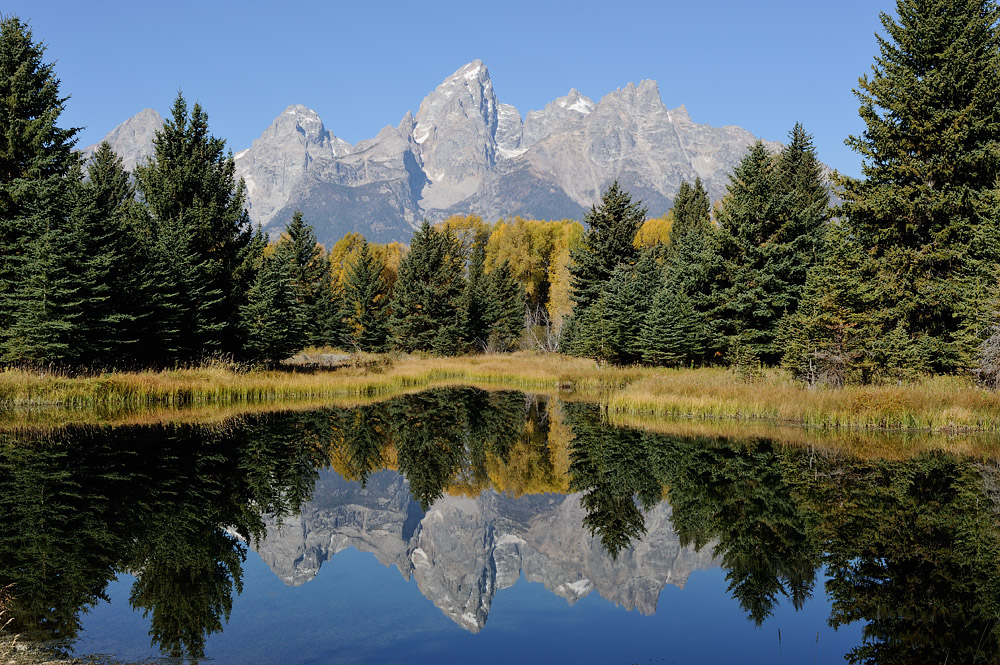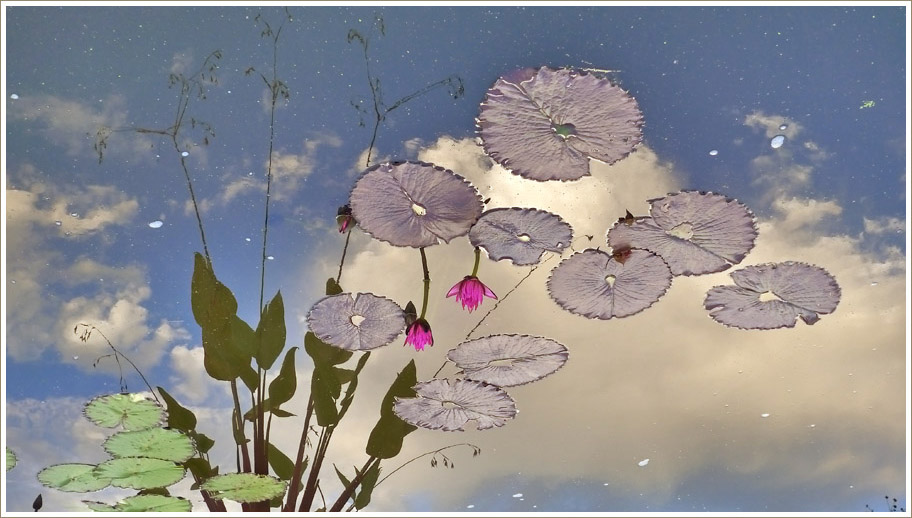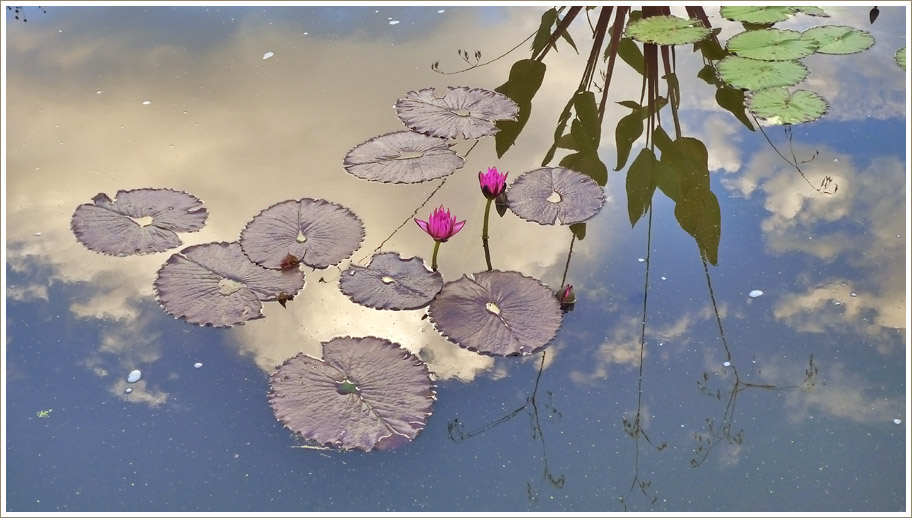This week's assignment might seem a little "mind bending" to some, but there is a method to my madness. Many of you have read my comments in the past about using a large format camera (like the one Ansel Adams used). One of the primary advantages of using a large format camera was that it allowed the photographer to use a very large sheet of film in order to produce much higher resolution prints. There were also some idiosyncrasies with using this type of camera. One of these idiosyncrasies was that the photographer focused the image on a "ground glass" in the back of the camera, and the image on the ground glass was upside down and reversed. Although this upside down and reversed image took some getting used to, many large format photographers came to view this quirk as an advantage.
Viewing the image upside down allowed them to more easily "abstract" the image elements in order to better judge the way they came together into a well balanced frame. Viewing the subject as an abstract shape or form allowed the photographer to better judge the overall impact of the shapes, forms, colors and light in the image and how these came together as a whole, and made it much easier to judge the "balance" of the composition. It was a good bet that if these abstract elements came together into a pleasing composition when viewed upside down, that the finished print, when viewed right side up would have a very strong composition. If, on the other hand the abstract elements were "off kilter," skewed, unbalance or just a confusing jumble, then this was a cue to the photographer to reframe the image or simplify his or her composition. Viewing the image upside down provided great impetus for producing simple, clean compositions. The busier or more jumbled a composition was, the less likely it would "come together" into a balanced whole when viewed upside down.
I was reminded of these concepts when our workshop was shooting this scene at Grand Teton National Park:

Teton Reflection
This was actually a more challenging scene to photograph than it appears to be in this image. The water level was much lower than in past years, and the water just below the reflection of the peak was marred by the intrusion of a mud bar and some unsightly dead branches. There were several clumps of grass intruding into the frame (including the one on the left of this image) and photographers were forced to decide how to "frame around" these intrusions. In addition, there were many photographers lined up along the bank, many of whom had come hours earlier just to claim the choice spot for framing the reflection in the the pond. Our group was forced to straddle tripods, squeeze in shoulder to shoulder, shoot between the heads of other photographers, or move further down the shore to a less "choice" spot. (I actually shot these images on during my "scouting" day prior to the workshop, not during the actual workshop itself.) Several photographers in our group asked me to review their compositions, and judging the composition almost always came down to the matter of "balance."
In the process of juggling for position and attempting to eliminate the intrusions from the frame, I also shot this version of the scene:

Teton Reflection II
Which one is better? Is it easy to tell at first glance? This scene cries out for balance, so which one is more balanced? Does this more abstract view help to assess the balance of the scene?:
I often find that looking at a small thumbnail of the image helps me to "abstract" the image and better judge the overall composition and balance of the image. So how can we use these techniques to help us judge composition in the field? Well, how about taking your image, and then when you are reviewing it on the LCD flip the camera over? This will allow you to see an "abstract" view of the scene in order to free your viewpoint and enable you to better judge the overall composition and balance of the scene.
Here's one more example that helps illustrate how a well-composed image will hold together when viewed upside down:
 Moment of Calm
Moment of Calm, Photographed by Dave Leiker (and flipped upside down by Keith

)
And here's the image as Dave intended it to be viewed:
 Moment of Calm
Moment of CalmPhotographed by Dave Leiker
You assignment for the week of 11 - 17 October is to take an image of a normal scene, and then flip that image upside down before uploading it to the gallery. Images will be judge based on how well the abstract shapes, forms, colors and light come together in the image to form a pleasing composition. Sound like fun?

I think participating in this exercise will help strengthen your compositional skills, and help you in your quest to create simple, effective compositions. Please upload your images to the "Upside-Down" album in the Weekly Assignments category of the gallery no-later-than midnight Mountain Time on Sunday, 17 October 2010.
I'll look forward to seeing your compositions.
Keith